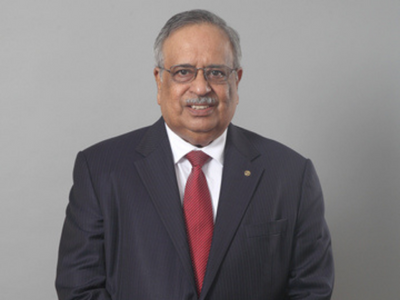Listen to this article
Mr. Damodaran all the best for Airawat. Tell us what inspired you to take entrepreneur journey?
Entrepreneurship is something that resides in most Indians. Some people get into it in their 20s while some get into it a little later after professional careers.
Tell us your new venture Airawat. How is Airawatdifferent from other indices?
We felt that there is a lot of room for innovation in the indexspace. While there are well established index providers in India and across the world, it is good to have a greater number of players to keep this space competitive and innovative.
What makes us different is our approach. We focus on a governance of companies. In fact, we have launched our first product ‘Atom Index’, country’s first mid cap index having 30 stocks based on corporate governance quality.
We are into evaluation of governance for over 7 years. Our partner Decimal Point is an expert in analytics space. We combined our synergies to make Airawat.
Your company focuses a lot on corporate governance. Tell us what goes into evaluation of corporate governance. What are the factors that decide if company has a good governance structure?
India follows a disclosure-based regime. In fact, we have one of the most efficient disclosure standards in the world. There is a lot of information available in public domain, which we use to evaluate corporate governance standards of a company.
But let me put it simply. I am a chess player. Let’s assume compliance represents black pieces while white pieces are governance. Now, the regulator makes a first move with a white knight and companies simply need to comply with it. We evaluate governance based on compliance standards.
We see if the company board is constituted with fairness, we look at number of board and committee meetings and auditor’s opinion. Another important factor that we look at is compensation paid to auditors for providing non-audit services.
We also give more weightage to companies who have given discretionary disclosure which is over and above the regulatory requirement. Overall, we evaluate 14 parameters to evaluate governance standards of a company.
Sectors and industries are interlinked to each other. While a company may be following good governance, it is offering capital or acting as part of supply chain for another company which does not fit into criteria. For instance: Bank gives loan to a tobacco company or a coal mining company. What happens there? How do you manage such conflicts?
That’s easy. We look at what businesses a company offers. For instance, take an example of one the largest tobacco companies. While initially this company was completely dependent on tobacco products to drive business, the company reduced it focus on tobacco by diversifying its offering across FMCG overtime only to become one of successful companies. The idea is to look at intent of the company.
Some sectors may be doing good. But not all companies in that sector perform well in terms of governance. When you put governance at the top to construct an index, it sends signal to the investing community that if they want to invest in a company that offers sustainable growth, the company has to be governed well.
Airawat has lot of offering in the mid cap space. What is your definition of mid cap and why are you so optimistic about mid cap companies?
It’s not that we will only be in mid cap space. We will explore other offerings like ESG index, large cap index and so on.
Currently, mid cap was getting less attention. Just because mid cap is larger than small cap, it is not a not so wellgoverned space. Why not recognize and reward a mid company which is doing exceptionally well in terms of governance?
While the AUM of passive funds have been growing by leaps and bounds, it has mostly come from institutional clients. Of the total Rs.6.57 lakh crore AUM in passives funds, retail investors hardly account for 2% of the total AUM. What are the three things that the industry can do to attract retail money in passives?
No one would have thought that we would achieve this number a few years back. While it is true that the majority of passives inflows has come from institutional clients, retail investors are gradually maturing and started investing in index funds through large cap index funds and thematic index funds.
Now coming back to the question, I think we need to make people aware about growth potential of equity markets to generate more retail interest. While SEBI and ecosystem have been doing it for quite some time, it has started yielding results considering the fact that our dependency on foreign institutional investors (FIIs) has reduced substantially. Thanks to SIP flows, we are very well prepared to deal with such foreign outflows.
Also, there was an era when we didn’t have quality advisors. We just had product pushers. Now, many advisors sit with their clients to discuss their risk appetite and financial goals before talking about any product.
This is why we felt it is right time to enter the market. We want to send the signals that rather than investing in any company, investors should invest in well performing companies which has a right kind of governance in place for sustainable growth.
In a way, the construction of index happens actively based on certain parameters. In fact, Daniel Crosby, in his book, The Laws of Wealth, says that the passives are actively created funds. What’s your comment?
Ashutosh Bishnoi: In my view, someone creating a benchmark is different from actively investing into constituent of that index.
Overtime, active fund managers became so big that they found it difficult to generate alpha on a consistent basis. Also, informed investors calculate cost and alpha before making any investment decision but this trend is yet to come in India.
Indian fund industry is dominated by active funds. Also, many funds have been doing good for investors. In such a scenario, why do you think that investors and MFDs should look at passive funds?
As investors evolve, things will change. Remember, knowledge is no longer a domestic product. It has no boundary. Currently, sitting at home, you can get a lot of relevant information at your fingertips.
Also, while people have made money, some lost it too. People draw lessons from both.
Ashutosh Bishnoi: Shift can happen only with the help of distributors. They have started SIP revolution and see what SIPs have become now. Many MFDs have now understood that as the market evolve, pie of passives will increase and they know they have to be a part of this growth story.
Today, MFDs deal with 20 fund managers, each offering 20 schemes. In passives, they need just need to identify a few indexes. They can utilize time to do handholding and acquire new clients.
Overtime, SIPs inflows will move from active to passive. RIAs and a few large MFDs have already started doing it in a few categories of funds.








